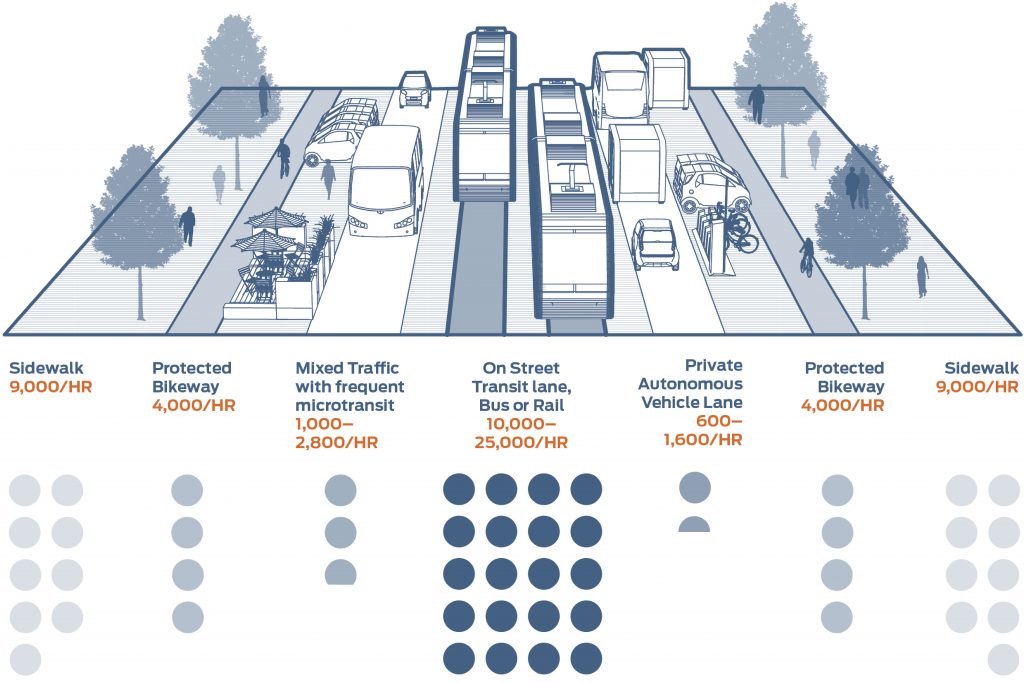
The National Association of City Transportation Officials (NACTO) is a leading source for progressive cities wishing to adopt cutting edge street designs that challenge the conventional norms of a car-first transportation system. It should be no surprise that NACTO has already begun thinking about how streets should be used once autonomous vehicles arrive on the scene. The first module of Blueprint for Autonomous Urbanism was released at the end of October, focusing on street design, curbside management, and new mobility systems.
The Blueprint starts by outlining six principles for autonomous urbanism:
- Safety is the top priority
- Provide mobility for the whole city
- Rebalance the right of way
- Manage streets in real time
- Move more with fewer vehicles
- Public benefit guides private action
These principles provide the framework for the rest of the ideas in the blueprint. In the online preview, safety is key in new ideas for street crossings. Pedestrian islands and slow vehicle speeds can allow for pedestrians to cross anywhere along the street, rather than needing to use designated crosswalks. Protected bike lanes are also championed as important design elements to increase the safety of using the most efficient form of transportation.
Rebalancing the right of way features in two sections of the preview. The first highlights the fact that bikes and transit can move far more people than single occupancy vehicles, and thus recommends prioritizing the use of the street for bikes and transit. The second explores the concept of curbside management, where space that was formerly dedicated to parking can serve a variety of uses throughout the day, ranging from delivery zones to restaurant seating.
Overall, the ideas are progressive in supporting a reduction of single occupancy vehicles and an increase in walking, biking and transit. While street designs can play a role in this behavioral shift, it is acknowledged that policy will be a crucial component as well. Only time will tell if cities can effectively regulate autonomous vehicles use in order to achieve desired outcomes, and if they will be able to afford to transform their streets in order to take advantage of the possibilities of autonomous urbanism.
Steph Nappa is a Master’s Candidate in Community and Regional Planning and an Urbanism Next Fellow at the University of Oregon. She is examining how to re-design city streets to prioritize bicycles, pedestrians and transit in an era of autonomous vehicles.


Has anybody noticed that private autonomous vehicles are another form of regimentation? How will they ad vitality to the urban experience? They may or may not solve traffic engineering problems, but not to the need for individual responibility in the management of behavior.